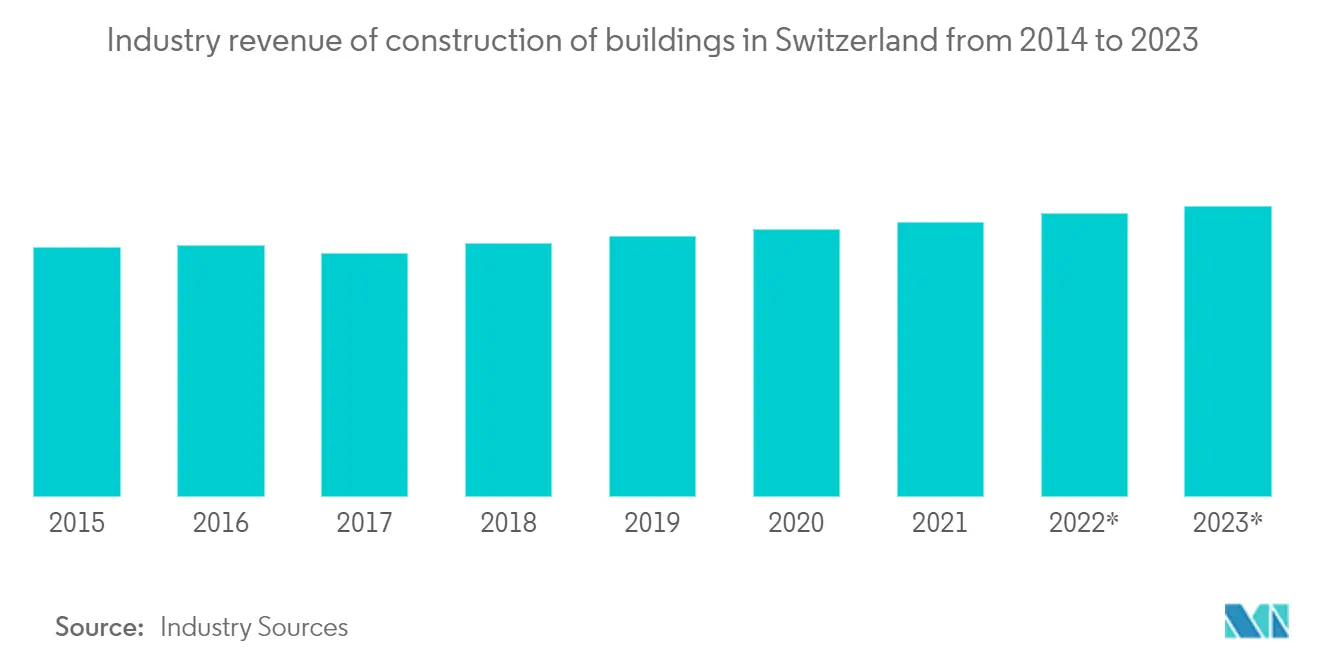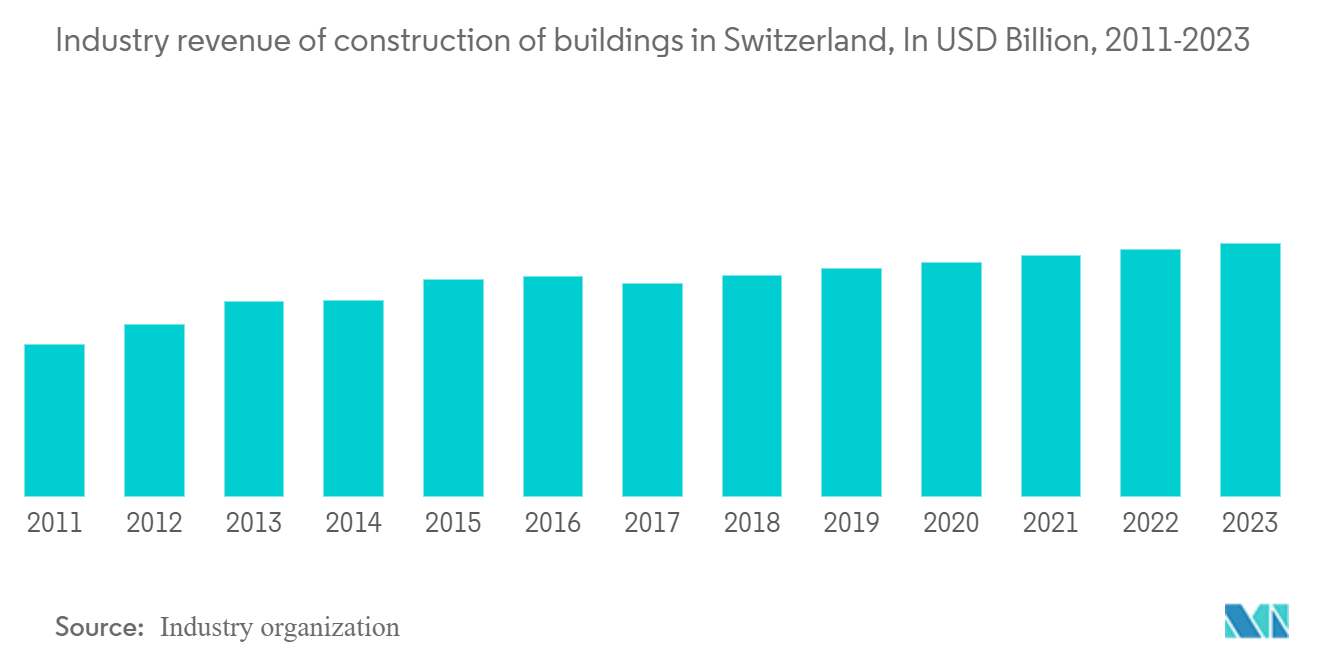Market Trends of Swiss Prefabricated Buildings Industry
This section covers the major market trends shaping the Swiss Prefabricated Buildings Market according to our research experts:
Urbanization and Growth of the Construction Industry
The increasing demand for affordable housing fueled by the rising population is expected to drive the market for prefabricated buildings in Switzerland. Prefab homes are the easiest way to build houses and other buildings. Systematically produced houses are a suitable solution for homeownership both individually and collectively. In Switzerland, traditional production is more difficult than in the rest of the world. Government policies that have been going on for many years have now become the culture of the country. Construction companies use pre-designed house types to keep planning costs low. Industrial methods are much more attractive than the construction process, which takes a long time on the site and has to comply with strictly controlled regulations. The easiest solution is to combine the parts produced in the factory in a modular manner at the production site and bring them ready to the construction site. However, in cases that do not comply with the regulation, the parts produced in the factory can be combined at the construction site as desired. In both options, action is taken according to customer requests.

Demand from the Residential Sector
Switzerland is a small mountainous country with only a small amount of land available for housing. Spaces are smaller than in many other countries.
Most people rent unfurnished accommodation. Less than 40% of the population owns homes, less than this in cities. When looking to rent, bear in mind that prices are high and the market is tight, particularly in urban areas.
A balanced housing market generally has a vacancy rate between 1.5 and 3%, but most Swiss towns and cities have a vacancy rate of between 0.5% and 1.2%. This means that the Swiss housing market is tight and demand is higher than supply. This affects the price and the number of available properties.
Companies are using eco-friendly materials and manufacturing techniques to differentiate their offerings from their competitors. The focus on energy efficiency has led to the adoption of energy-absorbing materials such as micro homes. The advent of turnkey solutions is another major factor driving the market growth in the country.
With the increasing shift toward turnkey housing solutions, the prefabricated housing market expects to pick up across the country. Moreover, the ease of preparation and consent procedures are likely to boost the demand for prefabricated houses. The demand for prefabrication material in the renovation of residential houses is also expected to provide significant opportunities in the future.


